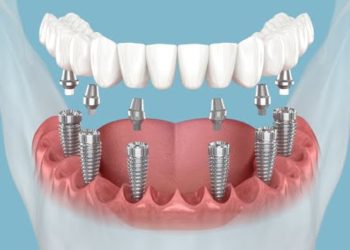When it comes to cosmetic procedures, most of us are familiar with hair transplants, lip fillers, or even Botox. But there’s one treatment that’s quietly gaining popularity, especially among men: beard transplants. Yes, you read that right. A beard transplant is a real thing, and it’s helping men everywhere get the facial hair they’ve always wanted but couldn’t grow naturally.
If you’ve never heard of it before, you’re not alone. Beard transplants are still a relatively niche treatment, but they’re rapidly growing in demand as facial hair continues to be a symbol of masculinity and style. We chatted with Beard Transplant Specialists My Hair UK who have clinics in London and Manchester to discover what a beard transplant is, how it works, and why more men are choosing to embrace it as a way to enhance their look.
The Rise of Facial Hair Fashion
In the past decade, facial hair has undergone a bit of a renaissance. The once clean-shaven look that dominated much of the early 2000s has been overtaken by the popularity of beards, moustaches, and even the “scruffy” five o’clock shadow. From hipsters in East London to celebrities on red carpets, beards have become a powerful style statement.
But while growing a beard may seem like a simple task, not everyone is genetically blessed with the ability to do so. Patchy, uneven growth, or even a complete inability to grow facial hair can be a source of frustration for many men. That’s where beard transplants come into play.
What Exactly Is a Beard Transplant?
A beard transplant is essentially a hair transplant for your face. It’s a cosmetic procedure where hair follicles are taken from one part of your body (usually the back of your head) and transplanted to your beard area. The idea is to fill in patchy spots, create a fuller, more even beard, or even build a beard from scratch for those who struggle to grow one naturally.
Just like a hair transplant, a beard transplant involves grafting individual hair follicles into the desired areas. The result? A natural-looking beard that grows and behaves just like normal facial hair.
How Does It Work?
The process of a beard transplant is relatively straightforward, though it does require a skilled surgeon to ensure the best results. Here’s a step-by-step look at how the procedure typically works:
- Consultation and Planning: Before anything happens, you’ll need a consultation with a qualified surgeon. They’ll assess your facial structure, your existing hair (if any), and discuss your goals. Whether you want a full, thick beard or just want to fill in some sparse areas, this is the time to set expectations.
- Donor Area Selection: In most cases, the hair for your beard transplant will come from the back of your scalp. The hair in this area is usually thick and strong, making it a good match for facial hair. The surgeon will identify the best area to harvest follicles from, ensuring that the donor site will still look natural afterward.
- Follicle Harvesting: There are two main methods for harvesting hair follicles: FUE (Follicular Unit Extraction) and FUT (Follicular Unit Transplantation). FUE involves removing individual hair follicles one by one, while FUT involves taking a small strip of skin from the donor area and dissecting it into individual grafts. FUE is more common for beard transplants because it leaves no visible scarring and offers a quicker recovery time.
- Grafting: Once the follicles have been harvested, the surgeon will carefully implant them into your beard area. This process is highly detailed, as each follicle needs to be placed at the correct angle to mimic natural hair growth. The goal is to ensure that your beard looks as authentic and natural as possible.
- Recovery and Growth: After the procedure, you can expect some redness and swelling, but this should subside within a few days. Over the next few weeks, the transplanted hair may shed (this is totally normal), and new hair will begin to grow in its place. Within a few months, you’ll have a beard that grows just like the hair on your head, which you can trim, shape, and style as you like.
Why Are Men Choosing Beard Transplants?
So, why would someone go through all this effort for facial hair? The answer often comes down to self-confidence and personal style. For many men, the ability to grow a beard is tied to feelings of masculinity, and not being able to grow one can have a real impact on self-esteem. A full, thick beard can enhance facial features, create a more rugged appearance, or simply help someone feel more like themselves.
Here are some of the top reasons men are opting for beard transplants:
1. Patchy or Uneven Beard Growth
Some men can grow a beard, but it’s not the full, even look they desire. Patches of missing hair or areas where the beard grows in thin can make styling difficult. A beard transplant can fill in those gaps and create a fuller, more uniform appearance.
2. Scar Coverage
Beard transplants are often used to cover scars on the face, whether from accidents, surgery, or previous facial hair transplants that didn’t go well. The transplanted hair can blend seamlessly with the existing facial hair, making scars much less noticeable.
3. Enhancing Facial Features
A beard can do wonders for a man’s facial structure. It can define the jawline, add balance to the face, and even create the illusion of a stronger chin. For men who want to enhance their natural features, a beard transplant can offer a long-lasting solution.
4. Style Statement
For some, growing a beard is more than just about facial hair—it’s about creating a signature look. Whether you want to achieve that perfect hipster beard, a sleek goatee, or a bold moustache, a beard transplant gives you the control to craft the exact style you’ve always wanted.
The Cost of a Beard Transplant
One of the most common questions people have about beard transplants is how much it costs. The price can vary depending on the clinic, the surgeon’s experience, and the number of grafts needed. On average, a beard transplant in the UK can cost anywhere from £3,000 to £7,000.
While this might seem steep, it’s important to consider the long-term results. A beard transplant is a permanent solution, meaning you won’t need to rely on expensive products or temporary fixes to get the beard you want. Many men view it as an investment in their appearance and confidence.
Are Beard Transplants Right for Everyone?
While beard transplants are becoming more popular, they’re not necessarily the right option for everyone. There are a few things to consider before deciding if a beard transplant is for you:
- Age: If you’re in your late teens or early twenties, you might want to wait. Facial hair growth can continue to develop into your mid-twenties, so it’s possible that your beard will fill in naturally over time.
- Donor Hair: You need to have enough healthy hair in your donor area (usually the back of your scalp) to be eligible for the procedure. If you’re also experiencing hair thinning or baldness, your surgeon will need to assess whether you have enough donor hair to achieve your desired result.
- Medical Conditions: Certain medical conditions, such as alopecia areata or scarring from previous surgery, may affect your eligibility for a beard transplant. It’s important to have a thorough consultation with a qualified professional who can evaluate your situation.
Alternatives to Beard Transplants
If you’re not quite ready for a surgical solution, there are a few alternatives you can try to boost your beard growth:
- Minoxidil: Commonly used for scalp hair growth, minoxidil has been shown to stimulate facial hair growth as well. However, results vary, and it’s not a permanent solution like a transplant.
- Beard Growth Serums: There are various serums and oils on the market that claim to stimulate beard growth. While these products can improve the health of your existing facial hair, they’re unlikely to generate new growth in patchy areas.
- Microneedling: Some men have turned to microneedling, a treatment that involves rolling tiny needles across the skin to stimulate hair follicles. When combined with topical treatments like minoxidil, it may encourage hair growth in areas where it’s sparse.
Conclusion
Beard transplants might not be as well-known as other cosmetic procedures, but they’re quickly gaining traction for good reason. For men who have struggled with patchy or non-existent facial hair, this procedure offers a permanent, natural-looking solution. Whether it’s about enhancing your style, covering scars, or boosting your confidence, a beard transplant could be the key to getting the facial hair you’ve always wanted.
As with any cosmetic procedure, it’s important to do your research and consult with a qualified professional before making a decision. But if you’ve ever felt dissatisfied with your beard (or lack thereof), a beard transplant might just be the treatment you never knew you needed.
David Prior
David Prior is the editor of Today News, responsible for the overall editorial strategy. He is an NCTJ-qualified journalist with over 20 years’ experience, and is also editor of the award-winning hyperlocal news title Altrincham Today. His LinkedIn profile is here.












































































